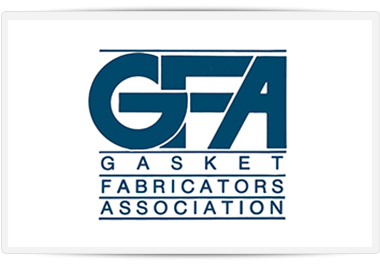Open Cell Sponge Material Guide: Properties, Types & Applications
Frank Lowe offers die cut open cell sponge rubber with or without adhesives. Read on to learn more about open cell foam & open cell sponge rubber.
Open cell sponge or open cell foam is an extremely versatile and common material used in an array of commercial and industrial applications.
Request a free quote and sample of this product
As the first type of cellular rubber ever manufactured, open cell sponge materials can be made from several of the same materials used to make solid rubber.
Frank Lowe offers a full range of different types of open cell sponge rubber and open cell foam. Instead of you having to understand all of the varieties we offer, we will listen carefully to your needs and guide you to the best solution. Continue reading for an overview of open cell sponge and open cell foam.
How Is Open Cell Sponge Manufactured
One ingredient present in all cellular sponge rubber is a powder common blowing agent like baking soda. As the uncured sponge rubber is heated in the mold, it rises or expands similar to the way a cake rises under low pressure. The baking soda then introduces a vast network of open cells.
By open cell, we mean every cell is interconnected with each other through an opening, so gas, air, and water can seamlessly pass from one cell to another. It's similar to the way a dish sponge absorbs water.
One excellent characteristic of open-cell sponge compared to closed cell sponge is open-cell sponges have an excellent compression set. This means air will rush out of the open cells whenever the material is compressed, but air will then rush back in once the pressure is no longer being applied or is released. As a result, the material has the ability to quickly recover to its full height, which isn't the case with closed cell materials.
General Characteristics of Open-Cell Sponge
Open cell sponge or open cell foam will have a specific set of characteristics in addition to features offered by the core elastomer. Some open cell sponge or open cell foam is very unique because it operates similar to a spring by returning to the original sate following compression. This is due to the chemical makeup of the material and the free flowing movement of air.
Breathable and soft, open cell sponge can easily conform to sealing applications in comparison to closed cell foam. At the same time, open cell foams can be manufactured at both low densities and high densities. However, it's less durable than closed cell foams or sponge options. A few key highlights of open cell sponge rubber include:
- Flexibility retained even in low temperatures
- Resilient material
- Resistant to bases and acid
Types of Open Cell Sponge Rubber & Open Cell Foam Materials
At Frank Lowe, we are home to a variety of different types of open cell sponge rubber and open cell foam. Some of the most common types of material we offer our customers include the following materials:
Natural/SBR Open Cell Sponge
Natural open cell sponge and foam components are used across several industrial and commercial applications. In particular, natural open cell sponge rubber components can be very effective in applications where shock absorption and cushioning are needed over repeated use, such as vacuum lifting seals, low-pressure gaskets, and expansion joints.
This material is also instrumental in vibration dampening, acoustic management components as well as high-temperature insulation across construction, automotive manufacturing, and aviation.
Open Cell Neoprene Sponge & Foam
Open cell sponge neoprene boasts the features associated with natural open cell sponge enhanced by the desirable attributes of neoprene rubber. Particularly, this material works well in applications that come in contact with petroleum-based products.
Open Cell Silicone Sponge
Boasting a wide range of firmnesses, open cell silicone foam is a versatile material typically used for cushioning and water seal applications. It's designed to be used in applications where an easy-to-compress, lightweight material is desired with excellent resistance to extreme low and high temperatures.
Open Cell Polyurethane Foam
Our open cell polyurethane foam is offered in both Polyester and Polyether based formulations. This material is regularly used across an array of industries and applications, including:
- Aerospace,
- Acoustical applications
- Appliances
- Filtration
- Automotive
- Gaskets and seals
- Industrial applications
- Military applications
- Marine applications
- Dust seals and speaker surrounds
- And more
Open Cell Sponge EPDM
Open-cell EPDM sponge is a soft pad commonly used for prolonged outdoor applications — such as gaskets, seals, and protective padding — due to its ability to resist sunlight, UV, and other elements. This material is compressible and extremely soft, which allows for outstanding flexibility and recovery following compression.
Open Cell Nitrile Sponge
Open cell nitrile sponge material is regularly used for applications that require a UL recognition. In addition, open cell nitrile sponge boasts resistance to:
- Moisture vapor
- Mold growth
- UV
- Low temperature
Reticulated Open Cell Foam
Reticulated open cell foam is a light-weight, versatile material that boasts exceptional resistance to mildew. Open cell reticulated sponge foam is used in an array of applications and industries, including:
- Sound absorption
- Filtration
- Fluid management
- Medical devices
- Automotive industry
- Consumer products
- And more
Die Cut Open Cell Sponge & Foam
Frank Lowe manufactures high-quality die cut open cell sponge components for virtually every industry and application. We'll die cut your component, gasket, or seal to your specifications.
You can choose your die cut components to be supplied on a roll or on sheets. Regardless of how you want your material, we can add a pressure sensitive adhesive to the back of the component that will bond to various surfaces.
Contact Frank Lowe for Open Cell Sponge
Whether you need open cell sponge for gasketing, cushioning, protecting, or any other application, we will meet your unique needs. Even if you're unaware of the exact design specifications, our team of design technicians will make sure the right materials and dimensions are being used for optimum performance. We even offer sample materials as well as provide quick run prototyping to test materials and parts.
Contact Frank Lowe today.
Request a free quote and sample of this product





